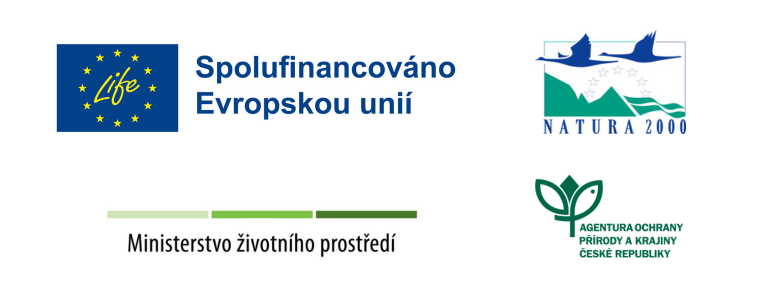PROSPECTIVE LIFE - Nature Conservation Agency of the Czech Republic
All news
null PROSPECTIVE LIFE
PROSPECTIVE LIFE: a 10-year project for better protection of plants, fungi and animals has been launched
16. 1. 2024
Since its launch in January 2024, it will run until 2033. It will bring about forty new Species Action Plans, Species Management Plans and Regional Species Action Plans for selected endangered plant, fungi and animal species, as well as their thorough monitoring. PROSPECTIVE LIFE will also focus on awareness raising, education and communication. [1]
"Red lists count 908 species of vascular plants, 162 species of vertebrates (birds are the most represented) and over 3 300 species of invertebrates among the critically endangered, endangered or vulnerable species in the Czech Republic. A number of factors threatens rare plants and animals. In addition to unsustainable management of the landscape, these include climate change and invasive species, of which there are 188 plant and animal species in our country. In an effort to halt or at least slow down the loss of species diversity, we have prepared an amendment to the Nature and Landscape Protection Act [2] to facilitate their effective protection. The PROSPECTIVE LIFE project will enable us to care for a wider range of endangered species, including wild pollinators," explains Minister of the Environment Petr Hladík.
Pollinators are declining in our landscape and many species of plants and animals are disappearing. In the Czech Republic, 18 % of mammal species, 48 % of bird species, 61 % of reptile species, 59 % of amphibian species, 45 % of fish species and 52 % of vascular plant species are threatened by declining numbers or risk of extinction.
"Over the next ten years, we want to reverse the negative trend for the most endangered species by implementing appropriate care for hundreds of sites in the Czech Republic in cooperation with farmers and foresters, eliminating negative impacts and actively involving the public. We will also focus on how to improve the condition of the landscape in order to preserve and increase biodiversity," explains the main objectives of the PROSPECTIVE LIFE project Pavel Pešout from the Nature Conservation Agency of the Czech Republic.
"We will prepare 44 new Species Action Plans, Species Management Plans and Regional Species Action Plans [3] for selected endangered species of plants, fungi and animals. At the same time, we will continue to work on those already in progress. The project also includes in-depth monitoring of species populations and the effect of the interventions. We will also focus on awareness, education and communication, we will look for ways to bring the beauty of our nature and its benefits for our lives closer to people," says Jindřiška Jelínková from the Nature Conservation Agency of the Czech Republic.
Species Action Plans are developed for the most endangered species of animals and plants. They combine different types of measures to increase the population of a given species. Their natural habitat is protected and restored, sometimes rescue breeding is established or plants are cultivated and planted. Regional Species Action Plans are prepared for species that are tied to a particular region or are under imminent threat of extinction in that region. There are now 13 Species Action Plans and 12 Regional Species Action plans. Species Management Plans are then prepared for those specially protected species whose life manifestations may conflict with human economic interests, but which also play a key role in nature. The main focus of the Species Management Plans is to find ways to minimise such conflicts. Three of them are currently underway - for wolf, beaver and otter.
"Preserving nature, especially healthy natural ecosystems and biodiversity, is essential for human survival. For this we need the right regulations, but also the provision of active care. This is what conservation programmes make possible. Thanks to them, for example, the Bohemian Sand Pink has not disappeared from the Czech landscape and the numbers of Aesculapian snake and European ground squirrel are increasing. The goals of the PROSPECTIVE LIFE project are ambitious, but they have the potential to bring positive changes to our nature and landscape," concludes Pavel Pešout.
Notes:
[1] The PROSPECTIVE LIFE project (LIFE22-IPN-CZ-PROSPECT- 101104621-2) was supported by the LIFE financial instrument of the European Union.
Currently, the LIFE Programme is also running an eight-year project “One Nature”, which aims to preserve the diversity of nature in valuable Natura 2000 sites through effective planning and management of these areas, the application of current research results in practice and the development of good relations and long-term cooperation with owners and users of land located in protected areas.
[2] https://www.mzp.cz/cz/news_20230822_Zakon-lepe-ochrani-biotopy-ohrozenych-druhu-a-pomuze-i-opylovacum
[3] For more information on Species Action Plans, Species Management Plans and Regional Species Action Plans, see www.zachranneprogramy.cz.
Photo: David Modřanský


Koniklec otevřený, foto: David Modřanský